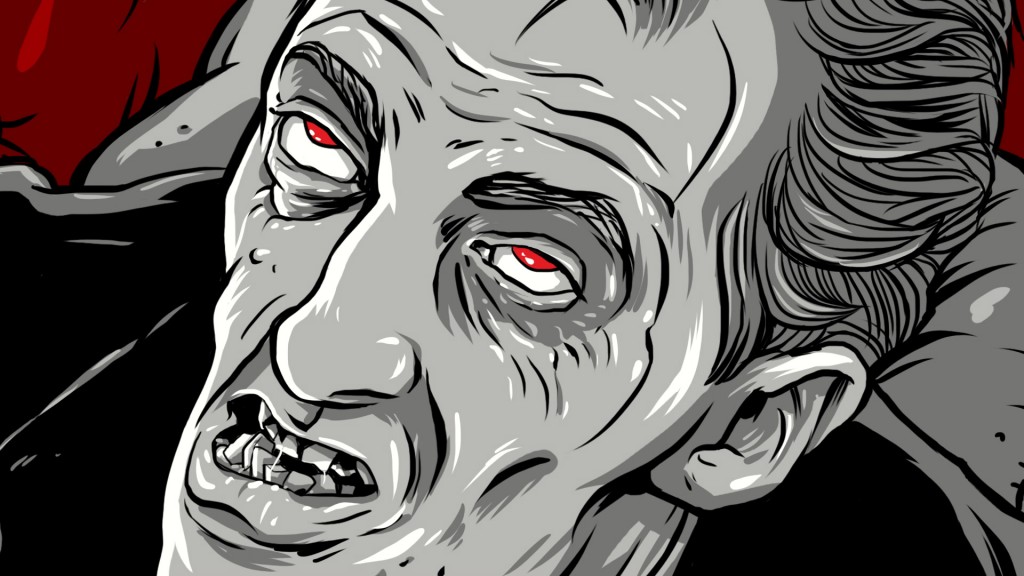Zombie fans among our readers will have read my conversation with Amanda last week about Birth of the Living Dead, the new documentary about game-changing horror classic Night of the Living Dead. On Halloween, I got a chance to sit down with producer Esther Cassidy and learn more about the film, the gender politics of George Romero’s work, and the broader symbolism of zombies.

Birth of the Living Dead, a passion project for zombie-loving director Rob Kuhns and his (life and work) partner Cassidy, was initially intended to be a “making of” documentary featuring interviews with the cast and crew of Night, but 2008’s One for the Fire stole that thunder. So Cassidy and Kuhns changed tack. They already had experience with socially conscious journalism from their 2001 PBS documentary Enemies of War, about the El Salvadoran civil war, and Kuhns’ work for Bill Moyers got him access to archival footage from Moyers’ tenure as Lyndon B. Johnson’s Press Secretary, from 1965-67 – a.k.a. the years immediately preceding the release of Night of the Living Dead. The upshot is a documentary that superbly locates Night in the context of the US in the late sixties and skilfully analyzes the relationship between horror and sociopolitical climate, both then and now.
“A lot of people don’t realize that horror can make a political statement,” Cassidy observed. She’s a horror fan, powerfully affected by a viewing of Night in college, but, unlike Kuhns, she says she didn’t realize how much she appreciated the film until she came to make this documentary about it. This is a transferable result: Birth is likely to give viewers a renewed appreciation for Night and a deepened understanding of the social forces that influenced the making of modern zombies.
The two major cultural events to which Birth returns again and again are the Vietnam War and the race riots. In a late-sixties milieu, their specific impact lay in their relation to two major factors: the failure of sixties counterculture and the rise of mass media. Cassidy was quick to name the latter as an important component of today’s zombie obsession. Citing the devastation wrought on New York by Hurricane Sandy last year, she proposed that the renewed cultural interest in zombies this century can be linked to an awareness of both how connected we are and how fragile those connections are. “Everyone born since 1945 wakes up every day surprised we haven’t blown ourselves up yet,” she said of our generations’ apocalyptic mentality. Zombie films are a space where we can ask what resources we can muster to survive in a world where everything can change in a heartbeat, where the only certainty is death, and now even this is undone.

The failure of institutions is a major theme of Night, and no commentator fails to note the “suspicion of authority and unmitigated bleakness” (to quote the narration of Birth). There’s a revolutionary impulse here, a desire to overthrow the forces of war and racism and capitalism and consumerism through a dramatic world-altering event, but there’s also a hopelessness, a fear that perhaps we can never really change anything. The two warring impulses are surely familiar to everyone who has ever felt dissatisfaction with the status quo. I see the current popularity of zombies as reflecting a powerful sense of collective guilt and frustration. Zombies are the systemic forces to which we are subject and which we cannot control, but these same systemic forces are us – they are the result of human actions and human institutions.
Without the rule of law, mass media, and other social and cultural institutions to perpetuate them, racism and other systemic oppressions need no longer be cynically viewed as inevitable aspects of human existence. (The fact that they are still uncritically included in most of the popular zombie stories today bespeaks both a cynicism so deep it borders on nihilism and a profound artistic laziness.) What’s so brilliant about Night is that the conflicts within the farmhouse are to do with survival, not tribalism, and that the racially-coded violence is perpetrated by the forces of social institutions. Neither war nor racism is over, despite decades of activism and protest, so it’s no wonder Night‘s dark ending still speaks so powerfully to audiences. The fact that mainstream zombie fare today does not engage with critical social theory the way Night does instantiates this collective disillusionment on a metatextual level too. What comfort is there? Romero offers, “There’s always the refreshment stand.”

Night of the Living Dead is far from an actively misogynistic movie, but it does fail to address the vector of gender oppression, which makes its social engagement, otherwise so sophisticated, seem thoroughly incomplete. Cassidy can provide a feminist counterreading for most of the female characters in the movie, from the teenage girl whose desire to help her boyfriend leads to the downfall of the escape plan, to the strong mother whose love for her daughter is her weakness, but she’s under no illusion that Night is an explicitly feminist text. As she points out, you have to look to Romero’s series of sequels – Dawn, Day, Land, Diary, and Survival of the Dead – for some genuinely well-rounded and interesting female characters. The man has learned, and his work has developed accordingly.
Perhaps, then, there is ultimately a message of hope for redemption, for a new radically reconstructed world, but it requires a lot of work and self-critique and undeniable pain and horror and times of bleakness and despair. And that seems to be missing from a lot of present zombie stuff, wherever engagement with social issues is missing. Without that engagement, zombie stories are cynical voids of human feeling, all style and no substance, pure money-grabbing consumerist culture. They are zombies, in the most Baudrillardian way, and our only comfort is the refreshment stand.
Hope rests in the people who don’t succumb to nihilism. One of the most interesting strands in Birth is the portrayal of an after-school program to promote literacy through film, where Night is a teaching tool for Brooklyn kids – mostly kids of color whose families aren’t exactly high on the socioeconomic ladder – and it’s fascinating to see how much the film engages them. Cassidy herself works with Downtown Community Television Center to “provide outstanding media arts education to underserved populations.” There are ways in which people are attempting to engage horror with a social conscience. And hopefully Esther Cassidy and Rob Kuhns are going to do more of it with their proposed forthcoming work, on the influence of the Holocaust and the atom bomb on horror, SF, and monster movies from 1945 to the present. I eagerly await it.
Birth of the Living Dead opens at New York’s IFC Center on Wednesday.
Max Thornton blogs at Gay Christian Geek, tumbles as trans substantial, and is slowly learning to twitter at @RainicornMax. He thinks way too much about zombies.
